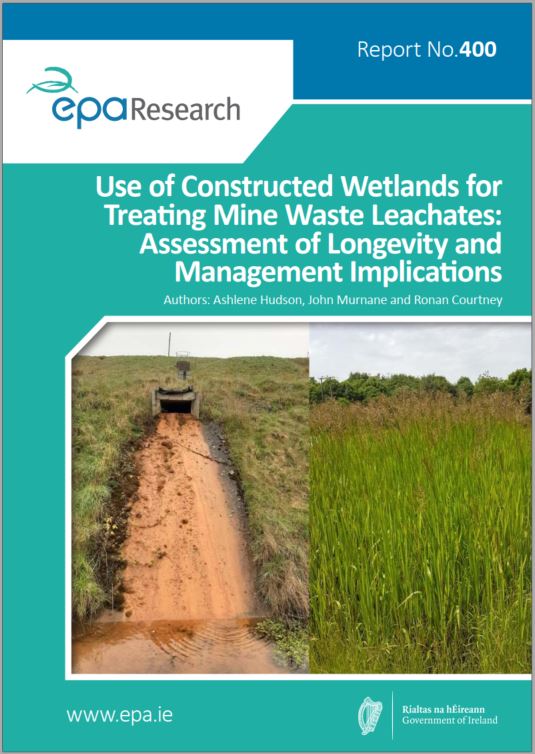Research 400: Use of Constructed Wetlands for Treating Mine Waste Leachates: Assessment of Longevity and Management Implications
Authors: Ashlene Hudson, John Murnane and Ronan Courtney
Summary: Mine waste storage facilities can generate significant quantities of wastewaters and leachates with extreme pH and elevated metal contents. Modern mine waste (tailings) facilities operating under licence from the EPA have constructed wetlands as a component of their Integrated Pollution Control (IPC) licences. This study provides evidence of the effectiveness of constructed wetlands for treating mine waters from different settings over time frames of several years.

Identifying Pressures
Mine waste storage facilities can generate significant quantities of wastewaters and leachates with extreme pH and elevated metal contents. If released untreated to the surrounding environment, these leachates will contaminate soils and surface and ground waters. Of particular concern is the generation of leachates from legacy sites, which are anticipated to exist in the timeline of multiple decades to centuries; this presents a major long-term environmental challenge. When planning for the closure of modern facilities and remediation of legacy sites, the use of constructed wetlands as a passive treatment system is viewed as an effective approach for the long-term treatment of mine waters, including for pH buffering and metal removal. However, the potential for wetlands to operate effectively in the long term is relatively unknown, with limited information on metal removal efficiencies over time and uncertain management implications for continued effectiveness.
Informing Policy
Modern mine waste (tailings) facilities operating under licence from the EPA have constructed wetlands as a component of their Integrated Pollution Control (IPC) licences; Industrial Emissions licences; Closure, Restoration, Aftercare Management Plan (CRAMP) documents; and closure plans. Furthermore, remediation of legacy sites require low-cost, passive strategies to treat mine waters emanating from waste facilities. Although many bench-scale and short-term trials have demonstrated great potential for constructed wetland technology to effectively treat mine waters, there is limited information on the long-term, field applications of such approaches. This study documents evidence of long-term applications of constructed wetlands within the mining industry and identifies key processes requiring monitoring and management for continued operation. Long-term effective treatment fulfils obligations to achieve “good quality” water status and informs sustainable development.
Developing Solutions
This study provides evidence of the effectiveness of constructed wetlands for treating mine waters from different settings over time frames of several years. It is shown that for constructed wetlands (1) metal removal processes are complex, variable and dependent on many properties within the wetland system; (2) wastewater characterisation should inform the design of an appropriate wetland system; (3) long-term treatment is possible; (4) monitoring of the wider wetland substrate and vegetation is required to assess long-term effectiveness; and (5) appropriate intervention and management strategies should be identified based on monitoring data.
https://www.epa.ie/media/epa-2020/research/epa-funded-research/REport-cover-400.jpg